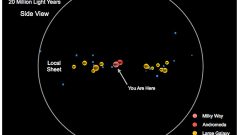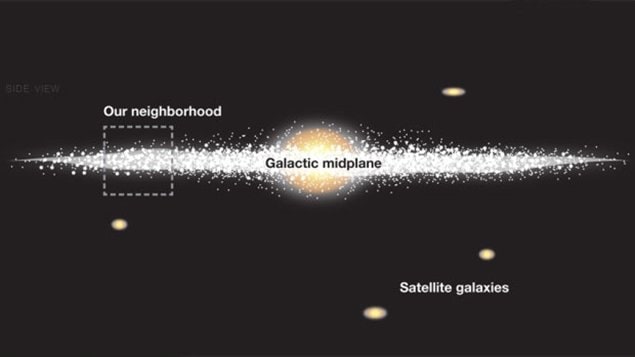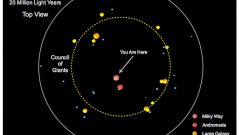Gazing up into a clear night sky, one can see millions of points of light. Stars. In fact that’s just our own galaxy which contains some 300 billion stars and planets.
Now an astronomer in Canada has created a clearer map of our neighbouring galaxies, from 2.5 million to 25 million light years distance from our own.
Marshall McCall is a professor in the department of physics and Astronomy at York University in Toronto, Ontario.
ListenProfessor McCall’s report was published last week in the Monthly Notices of the Royal Astronomical Society,

Astronomer Marshall McCall, creator of a clearer map of nieghbouring galaxies, standing near the York U Observatory ((Left) in Toronto, ontario. (CLICK to ENLARGE)
Although our own galaxy and its closest companion galaxy, Andromeda dominate a small group of galaxies about 3 million light years across,
Professor McCall has now added to that knowledge with the inclusion of a mapping of other galaxies in the “neighbourhood” from 20 -35 million light years away.
As it turns out, this neighbourhood of galaxies is oriented in a flat plane, about 35 million light years across, but only about 1.5 million light years thick, and are positioned somewhat like chairs around a large table, with the Milky Way and Andromeda in the middle.
The York U astronomer calls this a “council of giants” and has labelled this group as a “local sheet” of galaxies. Twelve of the galaxies are flattened spiraling discs with two slightly bulging galaxies at either end of the “council”.

Our galaxy, the Milky Way is a relatively flat spiralling disc of billions of stars and planets, but along with our near neighbouring bright galaxies, they are all in a relatively linear plane, about 25 million light years across, but only about 1.5 million light years thick ((McCall) CLICK TO ENLARGE)
McCall suspects that the gravitational forces and torque of the two central galaxies might have played a role in the “council” forming a ring-like positioning when the universe was smaller, while there is a suggestion the two more elliptical older galaxies on either end may have played a role in flattening the other galaxies in the local sheet.
He notes that the universe is filled with similar local sheets with even greater empty spaces in between.
Professor McCall says there are still many mysteries to be unravelled including a better understanding of “dark matter” and a unified theory of the forces of nature.
VIDEO of the “COUNCIL of GIANTS”- our nearest “bright” galaxy neighbours, only millions of light years away.








For reasons beyond our control, and for an undetermined period of time, our comment section is now closed. However, our social networks remain open to your contributions.